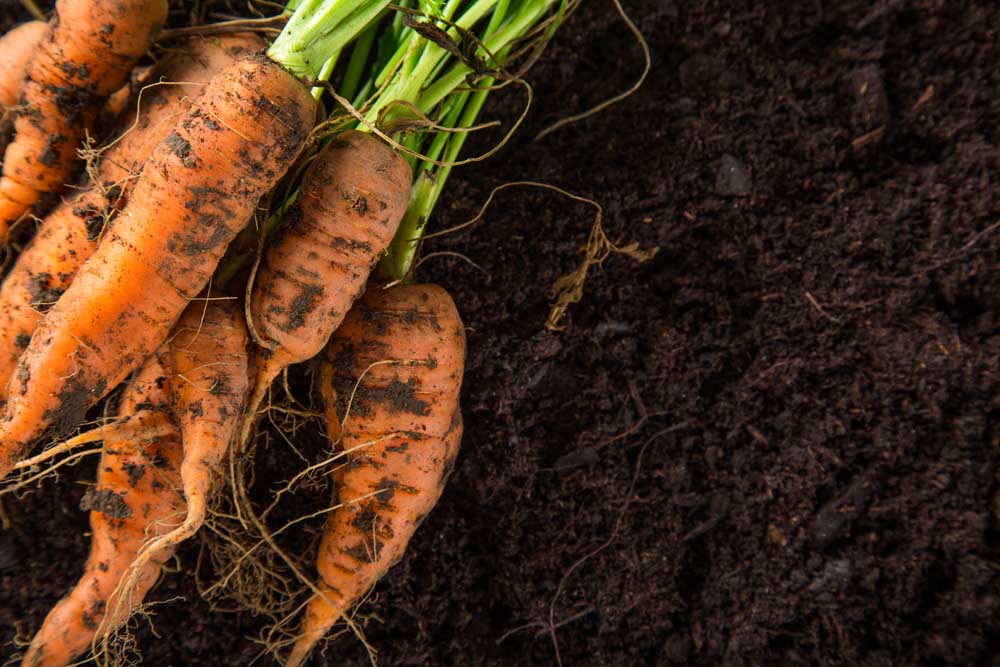Plant pairings can be mutually beneficial
Published 1:45 am Tuesday, June 2, 2020

- Virtual Q&A Sessions for Growing Vegetables in Central Oregon
The topic of three of my favorite garden books center on companion planting. Perhaps the interest began with the early publications from the Rodale Press and the writings of Bob Rodale. So many secrets of nature revealed. Gardening became a fascinating mystery to me of whys and wherefores rather than just a pathway to provide food.
Somewhere along the way we became enamored with instant gardening results without physical or mental problem solving. Spray for this, spray for that, add some fast -acting fertilizer if the plants look a little off. Don’t try to solve the problem; just pull it out.
My three valued books are “Carrots Love Tomatoes,” by Louise Riotte, “Great Garden Companions,” by Master Gardener, Cornell Cooperative Extension, Sally Jean Cunningham and my very favorite, “Companion Planting,” authored by Bob Flowerdew, an organic gardener and author in England. In addition to his writings are inspirational photographs and illustrations.
The classic companion planting is the Iroquois tradition of the Three Sisters.
The Iroquois method was to plant corn, pole beans and squash together for mutual benefit. The corn stalks become the trellis for the beans, which in return fix nitrogen in the soil. The squash deter raccoons, keep down weeds and shade the soil so it doesn’t dry out, while the corn canopy provides some protection from squash bores.
Companion planting is recognized as being folklore, old wives tales and not based in research. “Gardening is often about adjusting the conditions to suit the plant, and companion planning is just one more method of adjustments” writes Flowerdew.
Riotte points out it is important to remember that not all “protective” botanicals act quickly. Marigolds, to be effective in nematode control, should be grown over at least one full season and more is better.
Cunningham’s drive as an educator was to study how to attract the beneficial insects and how they could discourage the insect pests. “If we fight nature’s rules, we’re forced to rely on chemicals to keep our crops productive. But if we cooperate with nature, we can have it all: a beautiful garden, a great harvest and lots of fun along the way.”
Mixed plantings give better insect control than a monoculture where many plants of the same type are planted together in row after straight row. The Chinese farmed intensively for thousands of years. They continually inter-planted different crops to maximize yields, and we could have gained greatly by studying their methods. Increasing commerce with the Far East opened a whole new world of crop and method exchanges between countries and cultures.
Sadly, the European gardeners weren’t convinced the Chinese methods were anything more than myths. The French market gardeners were more open to the concept of inter-planting crops. The long straight rows eventually morphed into mixed block plantings for the market gardeners as they discovered the positive effects of inter-planting and the noted decrease of insect damage.
I thought about some of the crops we grow in our gardens and offer these suggestions.
• Broccoli does well with aromatic plants, dill, chamomile, sage as well as with potatoes, beets and onions. Do not plant with tomatoes, pole beans or strawberries. (Riotte)
• Carrots’ general health is better when planted near chives, lettuce, radish and tomatoes. (Flowerdew)
• Cucumbers and nasturtiums look great intertwined and provide shelter for beneficial spiders and ground beetles. Radishes and marigolds are good companions. (Cunningham)
• Melons need heavy waxed paper placed underneath as a barrier to keep worms from entering. (Riotte)
• Tomatoes do better with asparagus, basil, carrots, brassicas, alliums and parsley. (Flowerdew) I planted my 100 -bulb bag of onions in my tomato beds this year.
The more we learn about the plants we love, the more satisfied we become as gardeners. Remember also that some of the hardest working beneficial insects call a weed their home.






